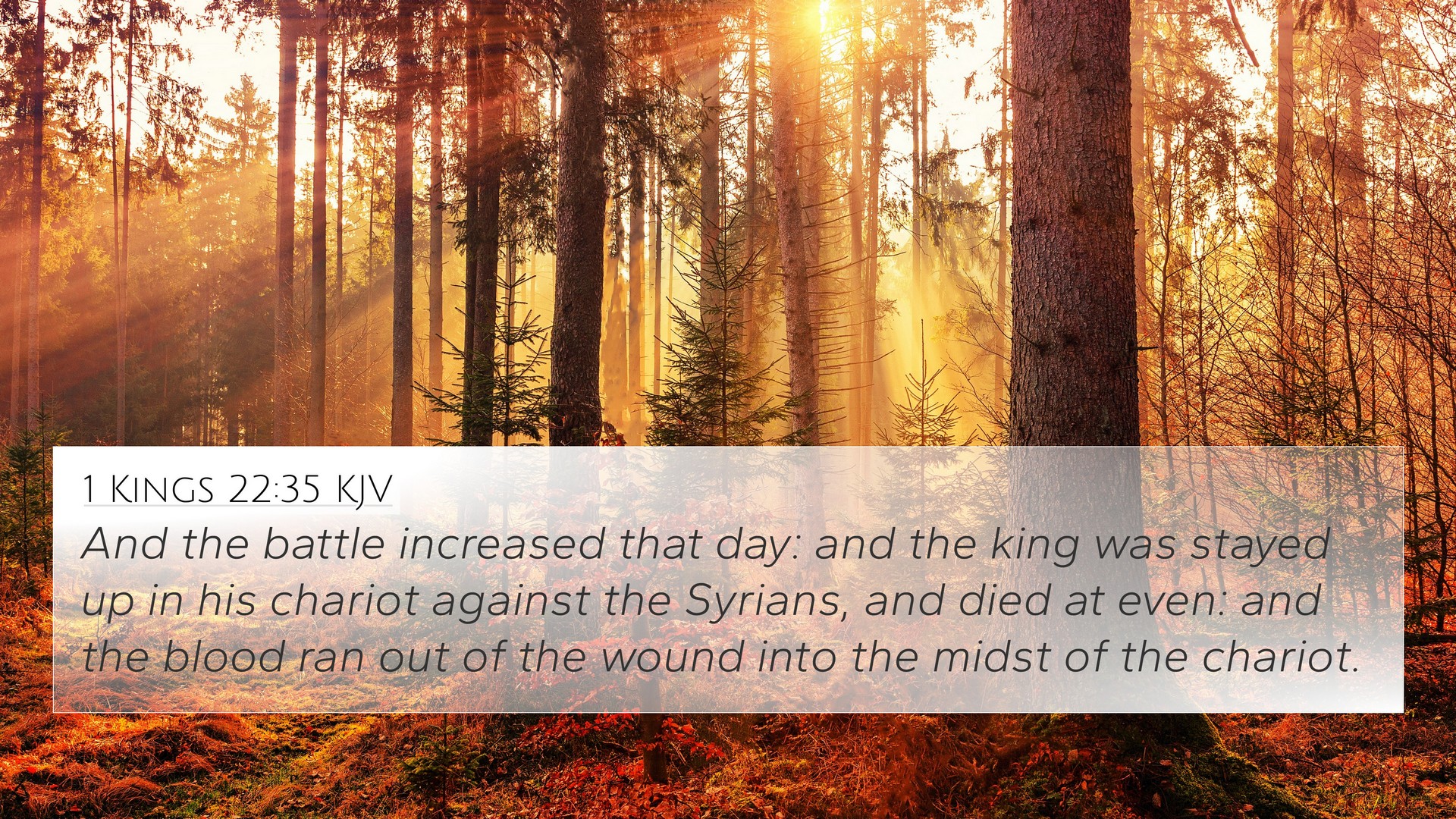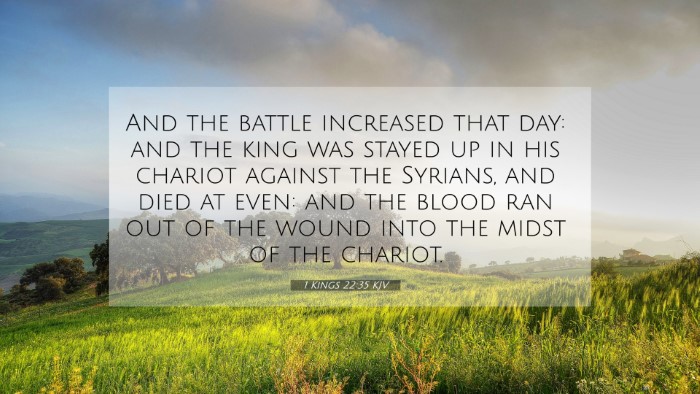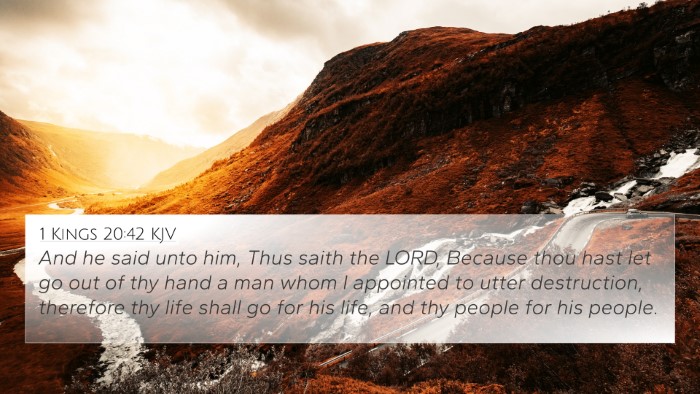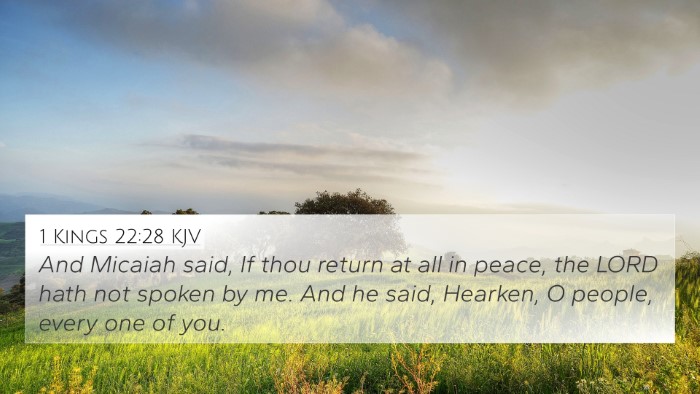Understanding 1 Kings 22:35
Bible Verse: 1 Kings 22:35 - "And the battle increased that day: and the king was stayed up in his chariot against the Syrians, and died at even: and the blood ran out of the wound into the midst of the chariot."
Verse Summary
This verse captures the climactic moment of King Ahab's demise during the battle against the Syrians. It emphasizes the severity of the battle and the tragic outcome for Ahab, who, despite being wounded, clings to his chariot until his death.
Commentary Insights
Insights from notable commentaries shed light on the profound implications of this verse.
-
Matthew Henry:
Matthew Henry emphasizes the futility of Ahab's strength and strategies in battle. His rejection of God's warnings led him to this dire end. Henry points out that Ahab, despite being wounded, maintains a semblance of authority by remaining in his chariot, signifying a king who cannot yield to defeat, even in death.
-
Albert Barnes:
Barnes interprets this scene as a showcase of divine justice. He notes how Ahab’s prior actions, particularly his covenant with evil and oppression, culminated in a fitting end. His death on the battlefield indicates the severity of rejecting divine counsel and illustrates the consequences of leading a life against God’s will.
-
Adam Clarke:
Clarke discusses the symbolic significance of blood running from Ahab's wound into the chariot. He asserts that this imagery highlights not just his physical suffering but also the deeper spiritual implications of Ahab's life—a life stained by sin leading to a just end marked by calamity.
Bible Cross-References
This verse resonates with several other passages in the Bible that illuminate its themes of judgment, leadership, and divine sovereignty. Below are cross-references that may enhance understanding:
- 1 Kings 20:42: Highlights the prophecy against Ahab and the warning about impending judgment.
- 2 Chronicles 18:33: Another account of Ahab's death in battle, reinforcing the theme of divine retribution.
- Proverbs 1:24-27: God's call and the consequences faced by those who refuse divine counsel, a principle seen in Ahab's rejection of Micaiah's prophecy.
- Jeremiah 22:18-19: Reflects on the fate of evil rulers, drawing a parallel to Ahab’s demise.
- Galatians 6:7: Reiterates the law of sowing and reaping, applicable to Ahab's life choices.
- Revelation 16:6: Discusses the reward for shedding blood, relating to Ahab’s violent reign.
- Matthew 24:45-51: A teaching on vigilance in leadership, warning leaders of the responsibilities and consequences associated with their actions, as illustrated by Ahab’s fate.
Thematic Connections
By examining 1 Kings 22:35 in conjunction with these related verses, we can identify several key themes:
- Divine Justice: A recurring theme where God enacts judgment on unrighteous leadership.
- The Weight of Leadership: The responsibility that comes with leadership positions, echoing through Saul and David's narratives as well.
- Warning and Rejection: The interplay of prophetic warnings followed by willful disobedience leading to inevitable consequences.
- Vigilance and Preparedness: Highlighted in Jesus’ teachings about stewardship and accountability for those in authority.
Conclusion
1 Kings 22:35 serves as a poignant reminder of the complexities of power, the importance of godly counsel, and the ultimate accountability each individual—especially leaders—faces before God. Through cross-referencing this passage with others, believers can gain a deeper understanding of the narrative of Ahab and the broader principles of scripture concerning wisdom, leadership, and divine retribution.




